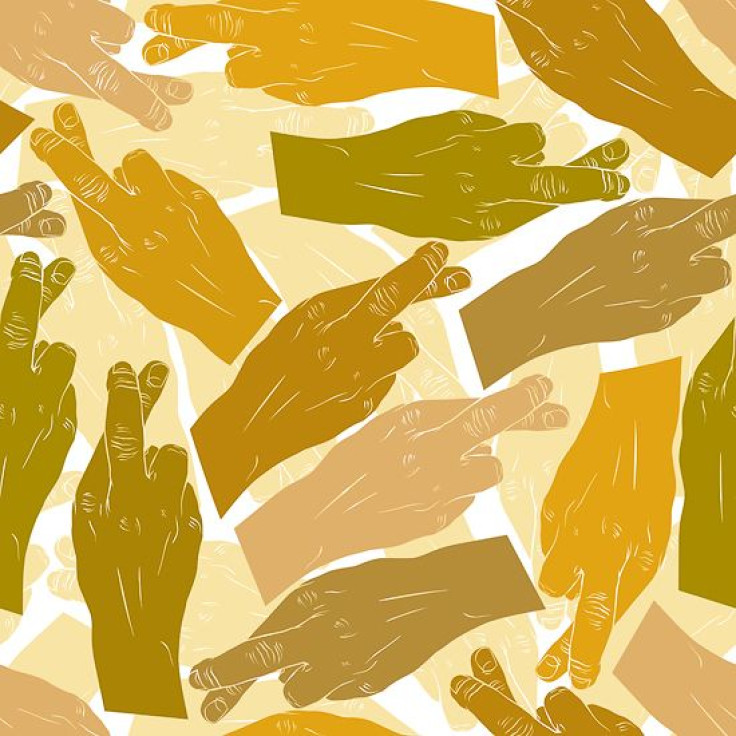Crossed Fingers Point The Way To Dealing With Chronic Pain: Do Brain Tricks For Relief Work?

When it comes to pain — physical, eyes watering, no-mistaking-it pain — most of us immediately reach for the pills. Now, a new study suggests even chronic pain may be dealt with in another, unexpected way. University College London researchers say the perception of pain may be changed by simply repositioning what hurts — in this study, crossing one finger over another.
“Many people suffer from chronic pain, and the level of pain experienced can be higher than would be expected from actual tissue damage,” Dr. Patrick Haggard, professor at UCL Institute of Cognitive Neuroscience said in a press release. “Our research… raises the interesting possibility that pain levels could be manipulated by applying additional stimuli, and by moving one part of the body relative to others.”
To explore the brain’s experience of sensation, Dr. Angela Marotta and Dr. Elisa Ferrè, both of UCL Institute of Cognitive Neuroscience, revisited an established pain experiment: the thermal grill illusion. In this experiment, different temperatures are applied to the fingers of participants — warm-cold-warm temperatures are delivered to the index, middle, and ring fingers, respectively. Unusually, this causes a painful sensation of burning heat on the middle finger, despite the fact that this finger actually is being stimulated by cold.
In the past, scientists have explained this unexpected result by focusing on the nerve pathways to the brain. The brain activity caused by warm temperatures applied to two fingers seems to cancel out the brain activity produced by a cold temperature on only one finger. More or less, the two sensations cancel out the third. “It's like two minuses making a plus," said Ferre in a press release.
Is pain perceived based on actual experience or patterns of sensation caused by body placement? Ferre and Marotta asked themselves.
For the current study, then, they played with the thermal grill experiment by crossing the fingers and applying temperatures in new ways. As Ferre and Marotta stimulated participants’ index, middle, and ring fingers, the participants adjusted a temperature gauge on their other hand to match what they felt on the cold target finger (either the index or the middle finger).
When the target finger was central within the configuration (warm-cold-warm), participants felt heat; when the target was peripheral (cold-warm-warm), they did not. Crucially, this effect occurred no matter whether the cold target was the index finger or middle finger. In other words, any time the cold finger was positioned in between two warm fingers, it felt the heat. Yet anytime the cold finger was moved to an outside position, the burning sensation was reduced.
“Our results suggest that the locations of multiple stimuli are remapped into external space as a group,” wrote the researchers in their published study. Someday, we may relieve chronic pain not by popping a pill but by nerve stimulation and movement.
Source: Marotta A, Ferre ER, Haggard P. Transforming the Thermal Grill Effect by Crossing the Fingers. Current Biology. 2015.



























